NCERT Solutions for Class 10 Science Chapter 12 – Magnetic Effects of Electric Current
NCERT Solutions for Class 10 Science Chapter 12 – Magnetic Effects of Electric Current are essential for understanding key Physics concepts in the CBSE curriculum. These well-structured answers help students grasp topics like magnetic field, electromagnetic induction, electric motor, and generator. Designed as per the latest syllabus, these solutions strengthen conceptual clarity and improve exam preparation. Ideal for revision and practice, they encourage logical thinking and scientific understanding, making them a valuable study tool for scoring well in Class 10 Science exams.
NCERT Solutions For Class 10 Science – Magnetic Effects of Electric Current – Exercise Images
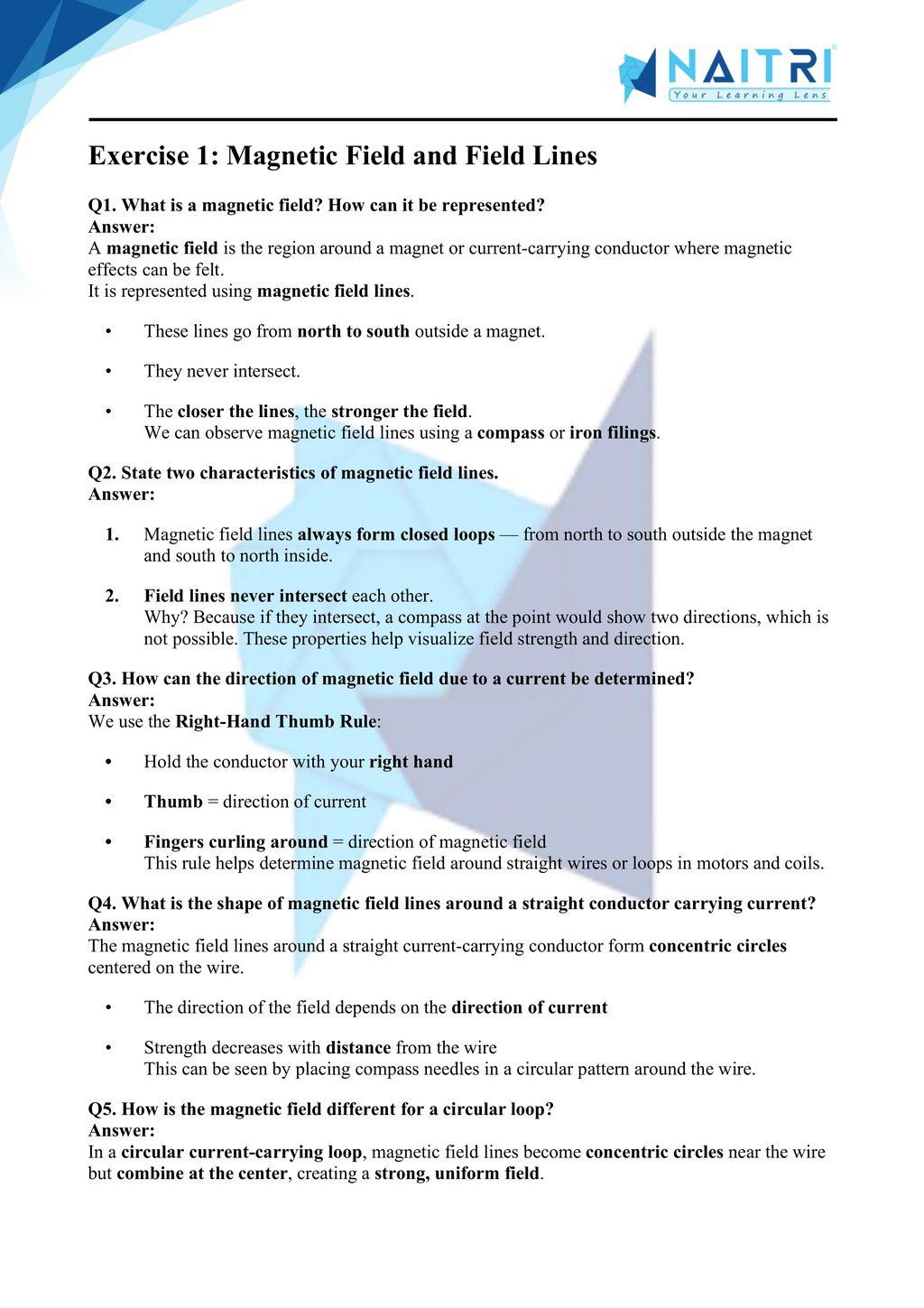
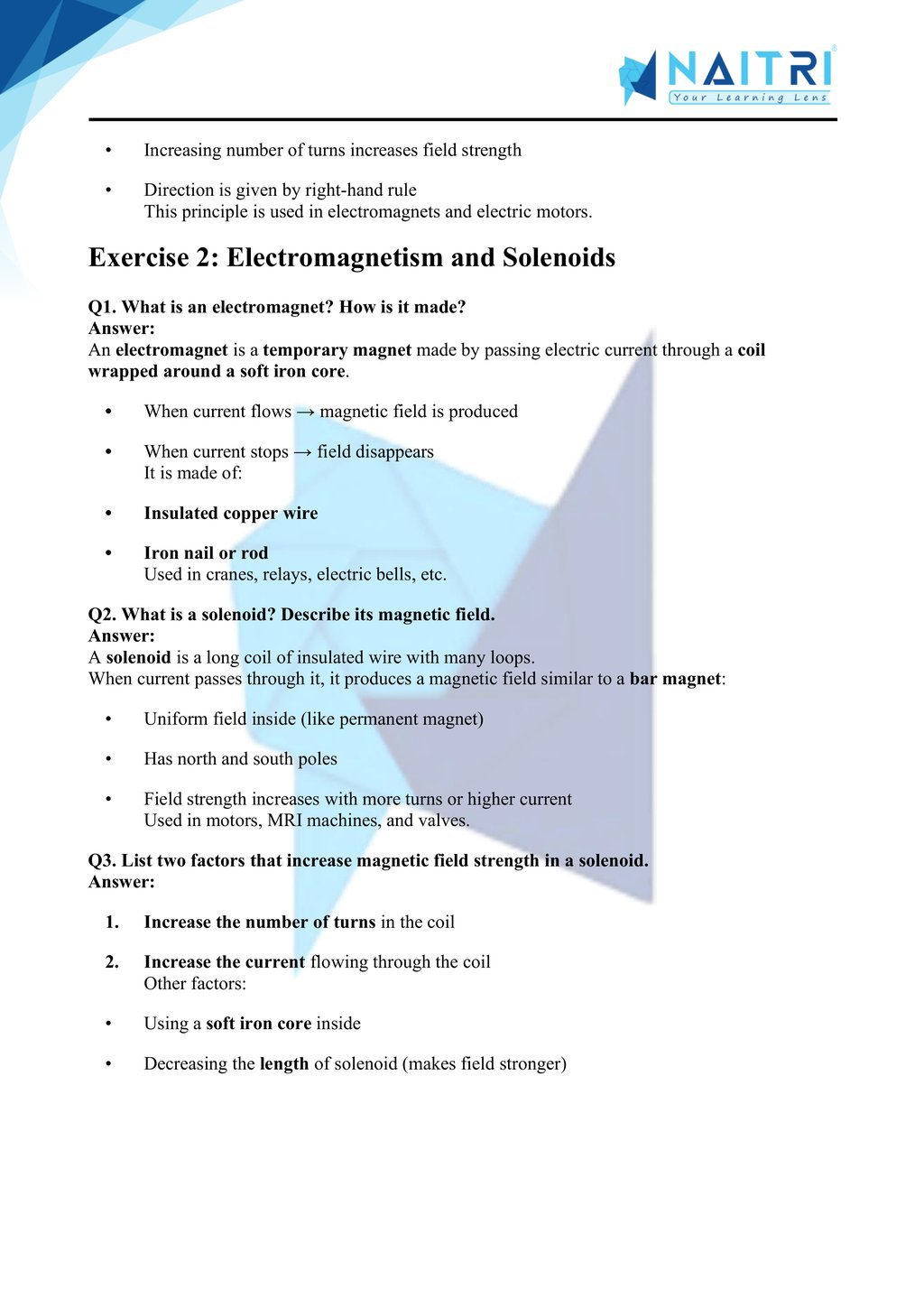
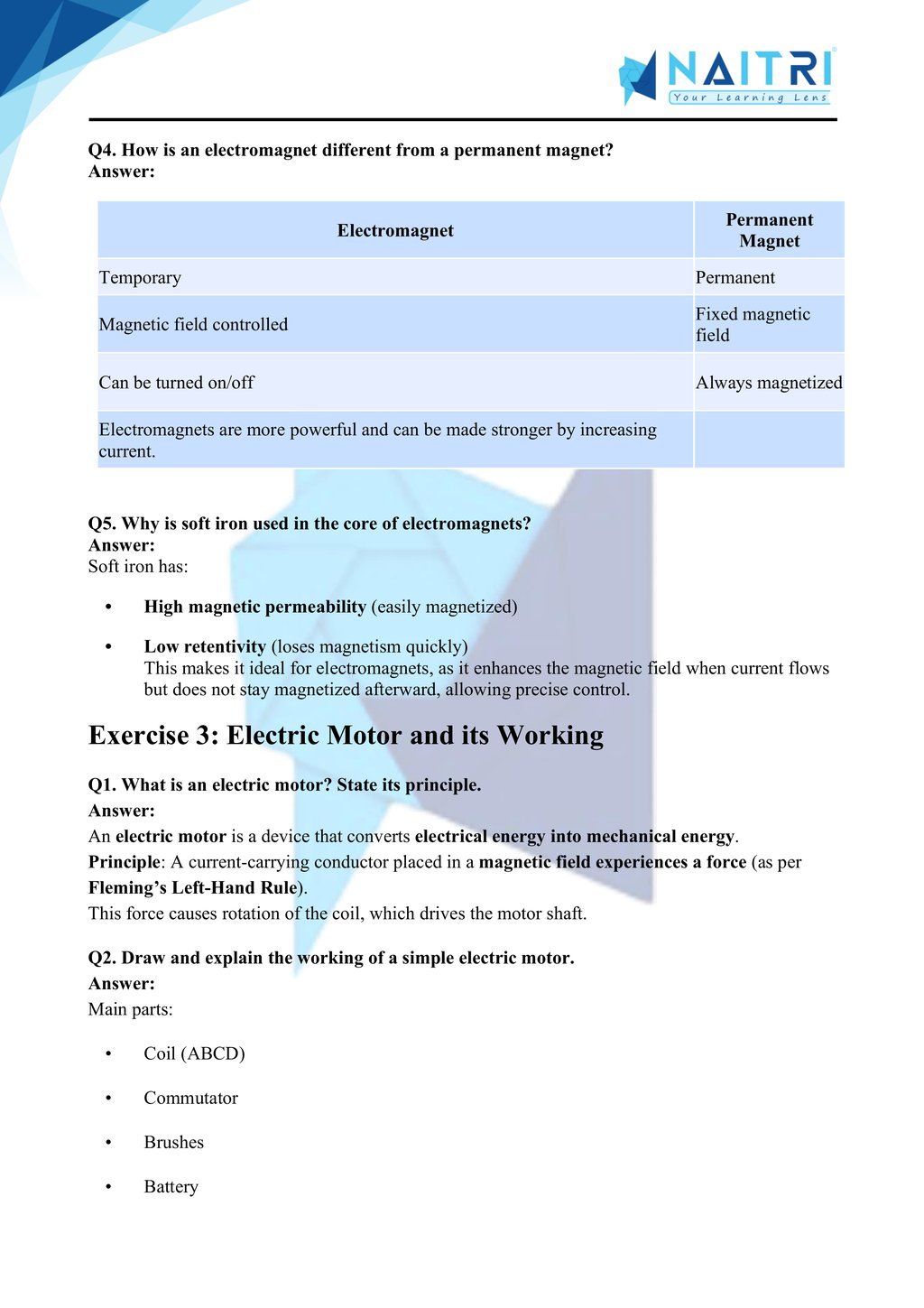
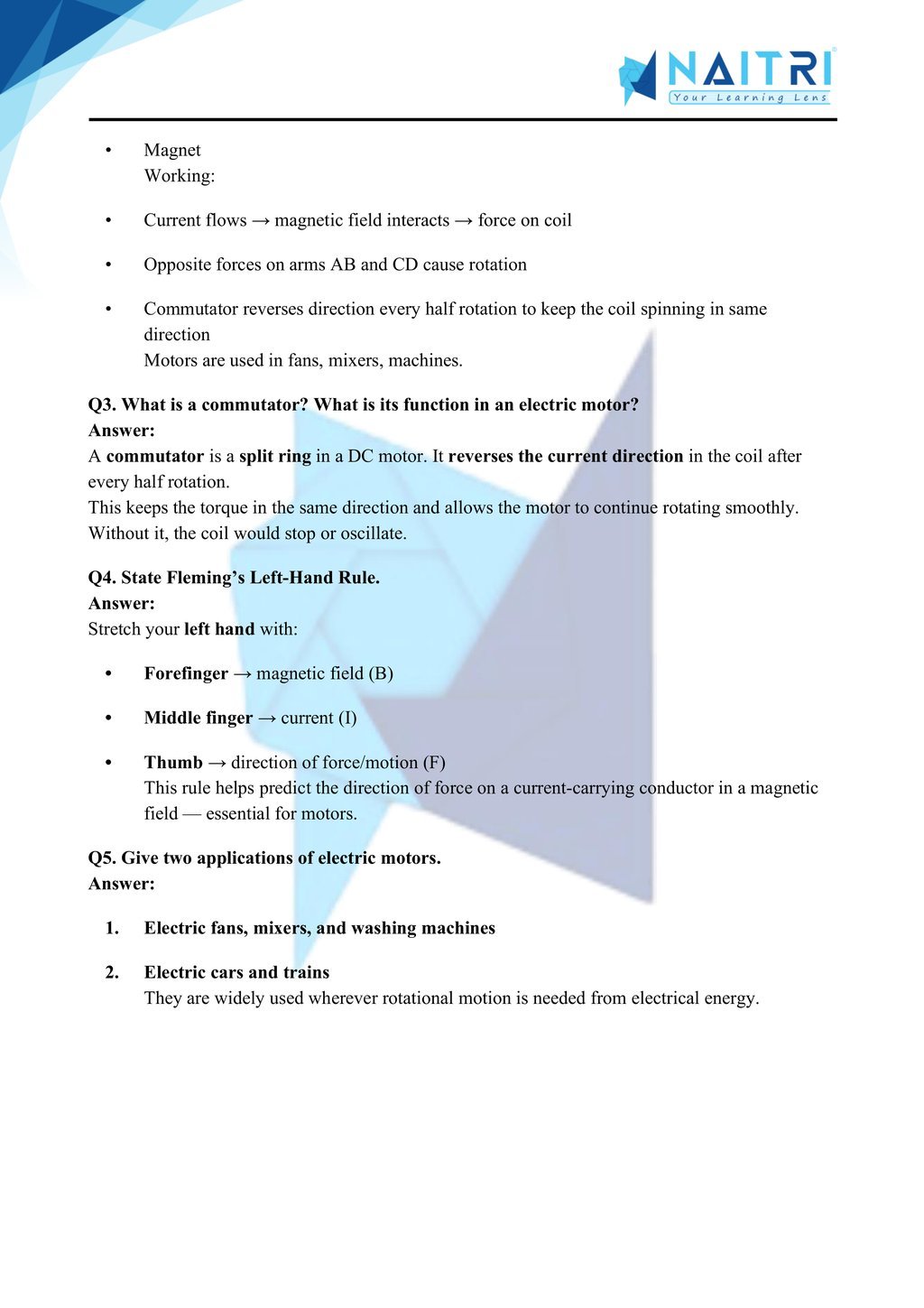
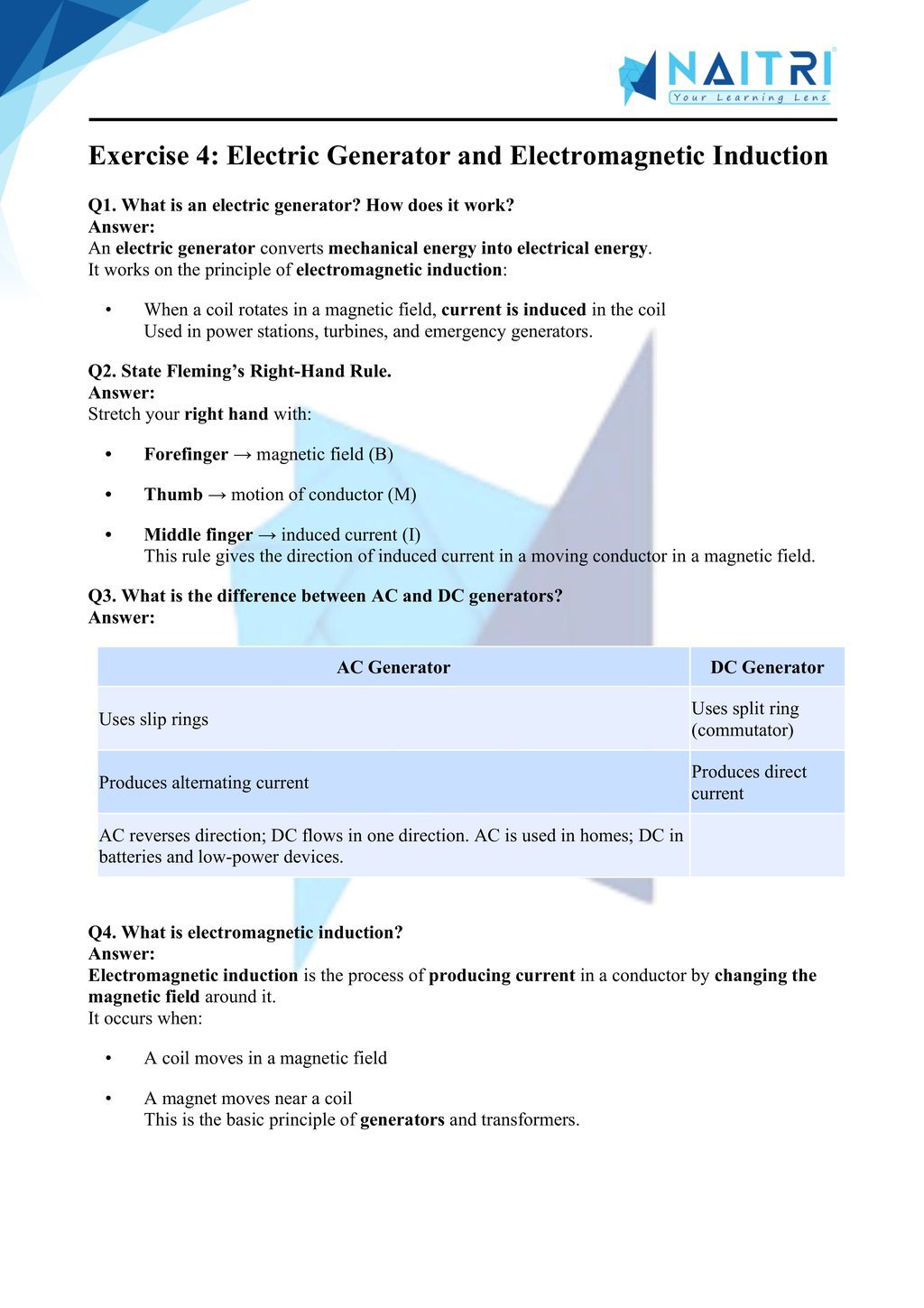
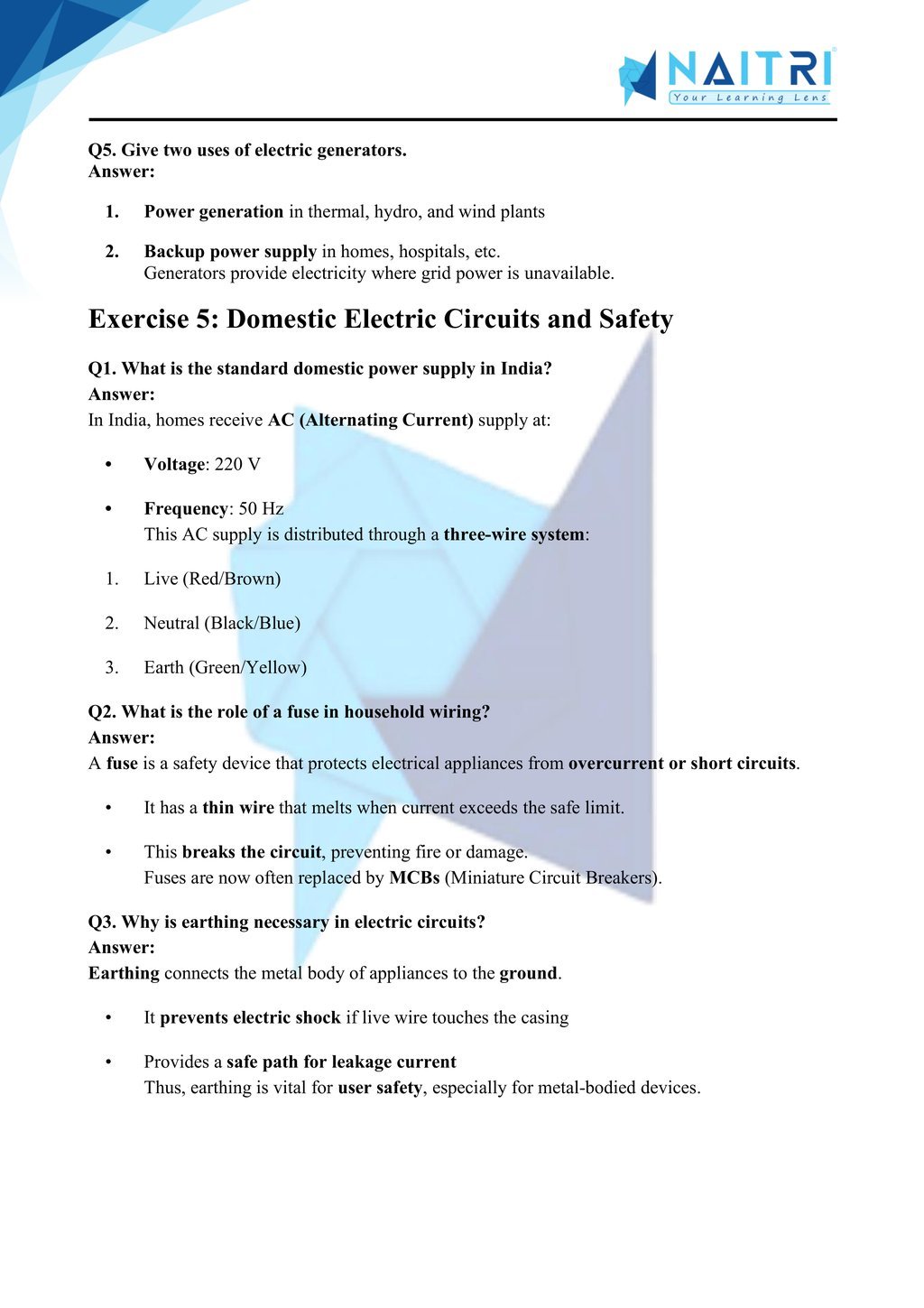
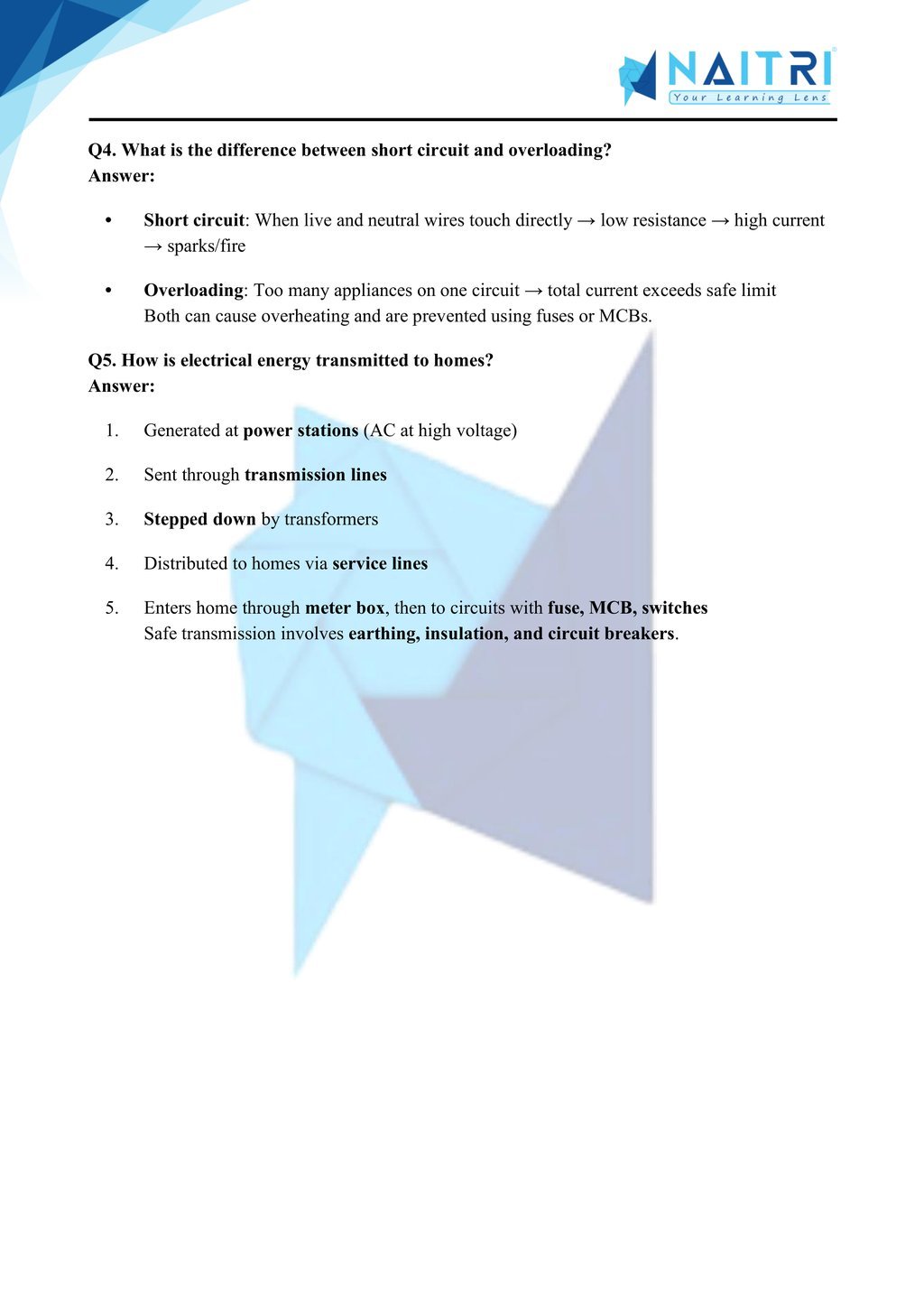
Experience Science Like Never Before – With AR!
Understanding Magnetic Effects of Electric Current is now more exciting and immersive! With the NAITRI App, you can explore complex science concepts through Augmented Reality (AR). Visualize magnetic fields form, coils rotate, and electric motors work — right in front of you. Our AR-powered lessons make learning interactive, 3D, and fun, helping you retain concepts better and enjoy every topic.



Visualize . Interact . Understand . The future of learning is here
Magnetic Effects of Electric Current – Important Questions with Answers
1. What is a magnetic field? How can it be represented?
Answer: A magnetic field is the region around a magnet or current-carrying conductor where magnetic force is experienced. It is represented by field lines showing direction and strength of the field.
2. How can the magnetic field around a current-carrying conductor be detected?
Answer: It can be detected using a magnetic compass. When a current flows through the conductor, the needle of the compass gets deflected, indicating a magnetic field is present.
3. What is the shape of the magnetic field lines around a straight current-carrying conductor?
Answer: The magnetic field lines around a straight conductor form concentric circles centered on the wire, as shown using iron filings or compass needles.
4. State the right-hand thumb rule.
Answer: If the right hand’s thumb points in the direction of current, then the curled fingers indicate the direction of the magnetic field around the wire.
5. What is a solenoid? Describe its magnetic field pattern.
Answer: A solenoid is a coil of wire with many loops closely packed. When current passes through it, it creates a magnetic field like a bar magnet, with field lines parallel inside and circular outside.
6. How is an electromagnet formed?
Answer: An electromagnet is formed by passing electric current through a solenoid wound around a soft iron core. The core becomes magnetized and enhances the magnetic field temporarily.
7. State two advantages of electromagnets over permanent magnets.
Answer: Electromagnets can be turned on or off with electric current and their strength can be controlled by changing the current. They are also stronger and more versatile.
8. State the principle of an electric motor.
Answer: An electric motor works on the principle that a current-carrying conductor placed in a magnetic field experiences a force. This force causes the coil to rotate, converting electrical energy into mechanical energy.
9. Name two devices where electromagnets are used.
Answer: Electromagnets are used in electric bells and cranes for lifting heavy magnetic objects in scrap yards.
10. Describe the function of a split-ring commutator in a motor.
Answer: The split-ring commutator reverses the direction of current in the motor coil every half rotation, ensuring continuous rotation of the coil in the same direction.
11. What is electromagnetic induction?
Answer: Electromagnetic induction is the process of generating electric current in a conductor by changing the magnetic field around it. This was discovered by Michael Faraday.
12. State Faraday’s law of electromagnetic induction.
Answer: Faraday’s law states that an electric current is induced in a conductor when there is a change in magnetic field around it. Greater the change, stronger the induced current.
13. What is the function of a galvanometer in an electric circuit?
Answer: A galvanometer is a device used to detect and measure small electric currents in a circuit. Its needle deflection indicates the presence and direction of current.
14. What is the principle of an electric generator?
Answer: An electric generator works on the principle of electromagnetic induction. It converts mechanical energy into electrical energy by rotating a coil in a magnetic field.
15. Differentiate between AC and DC.
Answer: AC (Alternating Current) reverses direction periodically, used in homes. DC (Direct Current) flows in one direction only, used in batteries. AC can be easily transmitted and transformed.
16. What is the frequency of AC in India?
Answer: The frequency of alternating current in India is 50 Hertz (Hz), meaning it changes direction 50 times per second.
17. Name the components of an electric generator.
Answer: An electric generator consists of a coil, a strong magnet, slip rings, brushes, and an external circuit. It produces electricity using mechanical motion.
18. Why are electric generators preferred over batteries for large-scale electricity production?
Answer: Generators can produce a continuous, large amount of electricity efficiently. They are more suitable for industrial and household power needs, unlike batteries with limited capacity.
19. Why is it important to use circuit breakers or fuses in home wiring?
Answer: Fuses or circuit breakers prevent damage from overload or short circuits by breaking the circuit when excess current flows, thus protecting appliances and lives from electric hazards.
20. What is the difference between a fuse and an MCB?
Answer: A fuse melts and must be replaced when current exceeds a limit. An MCB (Miniature Circuit Breaker) trips automatically and can be reset without replacement.
21. What is the role of the Earth wire in domestic circuits?
Answer: The Earth wire provides a path for electric current to safely flow into the ground in case of leakage, preventing electric shocks from faulty appliances.
22. Why are magnetic field lines denser near the poles of a magnet?
Answer: Field lines are denser near poles because magnetic field strength is greatest at the poles. This indicates stronger magnetic influence in those regions.
23. What is the advantage of soft iron in making electromagnets?
Answer: Soft iron enhances the magnetic field and loses magnetism quickly when current is switched off, making it ideal for temporary magnetic use in electromagnets.
24. Why do magnetic field lines never intersect each other?
Answer: Magnetic field lines never intersect because each point in space has only one direction of magnetic field. If they intersected, it would mean two directions at one point, which is impossible.
25. State one major application of electromagnetic induction.
Answer: One major application is the electric generator, which converts mechanical energy into electrical energy using the principle of electromagnetic induction to supply power for homes and industries.
Magnetic Effects of Electric Current explores how electricity and magnetism are interconnected. Students study magnetic fields, electromagnets, electric motors, and generators. The chapter includes applications such as electric bells and household appliances. It strengthens understanding of electromagnetism—an essential pillar of modern technology.
Related Chapters You May Like
Download Naitri App
Easy, Visual Learning — Right on Your Phone
Learn with Augmented Reality! The Naitri app makes CBSE and MP Board concepts interactive and fun — even in low-resource settings. Watch lessons, complete homework, take tests, and track progress — all in one place. Anytime. Anywhere.
Available on








